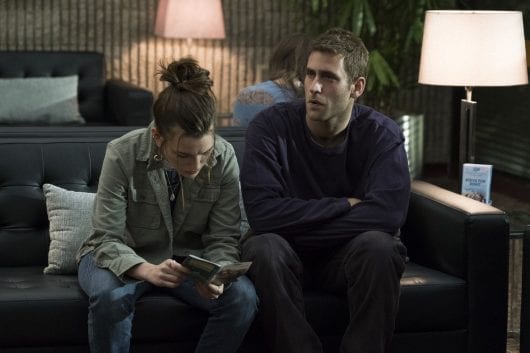
Victoria Pedretti and Oliver Jackson-Cohen in the Netflix series, “The Haunting of Hill House.” Credit: Courtesy of TNS
“The Haunting of Hill House” is the kind of show that will stick with you after each episode and well after you finish it.
“The Haunting of Hill House” is a Netflix original horror/drama series that follows a family — the Crains — living in a mansion over the summer in the hopes of restoring and selling it. What you find out early on is that it never happens due to one tragic night, which is constantly revisited throughout the show.
The sequence of events in the show are, more or less, told in a climactic order, in which the writers of the show reveal progressively more details over time, painting a bigger and bigger picture as the show goes on.
The show follows the Crains through their childhood and adult life equally, using flashbacks in an effective manner to revisit the same scenes from different perspectives.
This is especially well done during the first half of the show. The family is comprised of a mom, dad and their five children. Each of the first five episodes is told from a different child’s perspective, building on the story and revealing more about each character.
This first half of the series is concluded with Nelly’s episode, which easily has the best twist and some of the strongest emotional moments of the show. The episode is enjoyable and heart wrenching for the same reasons, though it does seem to be the peak of the show.
This is not to say that the second half is weak, but it just never reaches the same heights after the fifth episode.
You actually won’t find a ton of jump scares relative to the 10 hours of content, but there are enough of them, combined with a well-established atmosphere, to make this feel like a horror show.
So yes, there are jump scares, but there are also creepy situations that sometimes just don’t feel like they’re ending. This is especially true with the “Bent-Neck Lady.”
The “Bent-Neck Lady” haunts the youngest child, Nelly, and from her perspective and ours we only see her as a silhouette. She does pop up suddenly and might give a good scare because of the suddenness, but her silhouette is equally — if not more — unsettling when the camera lingers on her.
Most of the show is unsettling due to the house and some of the themes that are approached — but I won’t talk that about due to spoilers.
The house seems to be alive in the sense that during the day, it sleeps, and during the night, it awakens. There is a well-established rhythm of little things happening during the day and major moments occurring during the night.
It should almost make it less interesting that the house is predictable, but it instead leaves you restless waiting for the next nighttime spook. Even during the day, you can see ghosts hidden in the scenes, watching the family go about their day, adding another level to an unsettling atmosphere.
And while this is a strong entry into the horror genre, it’s not necessarily because of the horror: It’s because of the family.
The Crains all have their own personal demons as well as issues with one another that lead to intrigue all around. You get to witness them go through current hard times while still trying deal with problems from the past — like how they were traumatized in different ways in the house — and it makes for the most compelling part of the show.
Each character does well in serving their purpose, but not all of them are very likeable. Steven and Shirley are both frustrating to follow, both in denial over the literal and figurative ghosts of their past.
Steven pins their family seeing ghosts on a genetic mental illness while at the same time profiting off a book he wrote based on their stories from Hill House.
Shirley is quick to judge her family members for any slight or perceived wrongdoing, creating a very stubborn and generally angry character.
Generally speaking, anger isn’t a character trait, but with most of these characters the actors played within a relatively small range of emotions, making the characters more about emotions than their beliefs and motivations.
Rather poor writing further exposes this during any extended conversations between characters and especially during monologues. The strength in the writing lies within the way the story is structured and how the dialogue moves with it, but any time the dialogue needs to drive the scene, it can fall flat.
Overall, the Haunting of Hill House is a compelling, well-told story that manages to shine through somewhat trivial writing and acting issues.
Rating: 4.2/5


